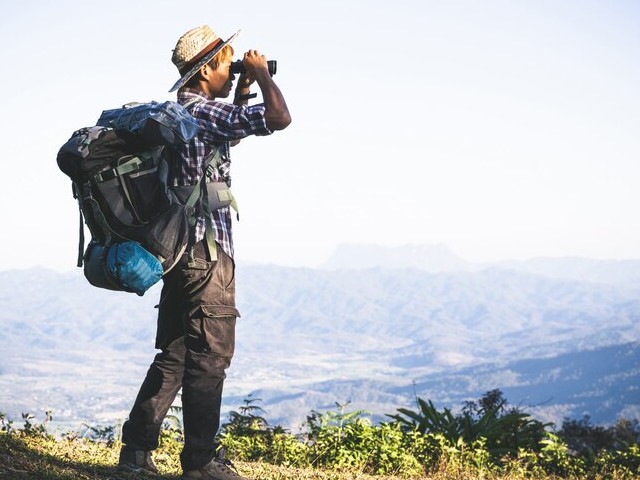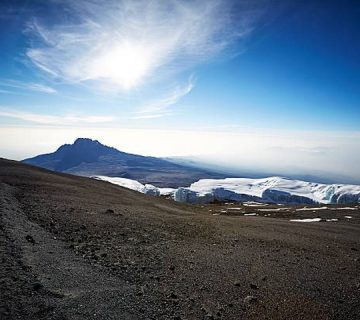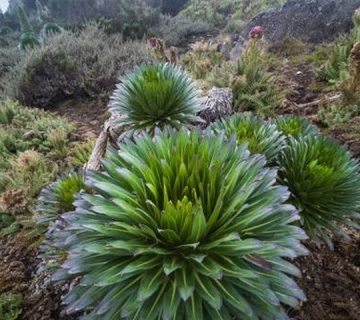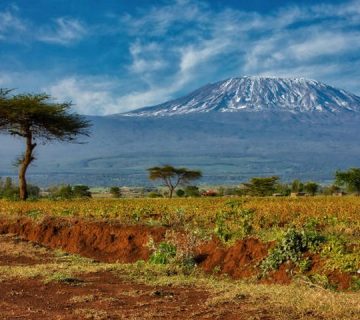Embark on a Timeless Adventure: Kilimanjaro Trek Through Volcanic Landscapes and Flora
Have you ever imagined stepping into a world where the earth whispers ancient tales through its smoldering volcanic landscapes and lush, vibrant flora? Mount Kilimanjaro, Africa’s rooftop, offers a trek that is not just a journey through physical terrain but a passage through diverse ecological systems, each telling a unique story of geological marvel and botanical wonder. At the Kilimanjaro Centre for Trekking and Ecotourism (KCTE), we invite you to tie your laces for a trek that promises to be as enlightening as it is exhilarating.
Why Kilimanjaro Beckons the Intrepid Explorer
Kilimanjaro isn’t just a mountain; it’s a monument of nature’s splendor. Towering at approximately 5,895 meters (19,341 feet), it is the highest peak in Africa and the world’s tallest free-standing mountain. The journey to its summit takes you through a tapestry of climate zones—from lush rainforests to alpine deserts to icy arctic summits. Each zone hosts a unique array of flora and volcanic features that make Kilimanjaro a pinnacle of trekking adventures.
Journey Through the Volcanic Splendour
The Lower Slopes: A Rainforest Habitat
The trek begins in the dense, humid rainforests that cloak Kilimanjaro’s lower slopes. This verdant area teems with towering trees, lianas and a chorus of bird calls. The moisture-laden air and rich soil provide a perfect habitat for diverse species of plants and animals, setting a vibrant stage for the beginning of your trek.
Heath and Moorland: The Giant Lobelias
As you ascend, the forest thins into heath and moorland, offering sweeping views and a cooler climate. This zone is famed for its striking giant lobelias, which stand like sentinels watching over the volcanic soil. These plants, with their rosettes of long leaves and towering flower spikes, are as alien as they are beautiful, and they thrive in the mountain’s unique climatic conditions.
Alpine Desert: A Lunar Landscape
Continuing upward, the lush vegetation gives way to the stark beauty of the alpine desert zone. Here, the landscape changes dramatically to a sparse, rocky terrain with volcanic rocks scattered across sandy soil. The surreal, moon-like landscape is both challenging and awe-inspiring, offering a stark contrast to the lush lower slopes.
The Summit: Glaciers and Snow
The final push to the summit—Uhuru Peak—takes you through the arctic zone. Surprisingly, even at the equator, Kilimanjaro hosts glaciers whose icy fingers creep down its crater rim. Reaching the summit, you stand on a glacier, looking out over the clouds, with the curvature of the earth visible at the horizon—a testament to the power of volcanic forces that shaped this magnificent mountain.
Flora of Kilimanjaro: A Botanical Treasure Trove
Mount Kilimanjaro is not only a geological marvel but also a haven for botanical enthusiasts. The distinct altitude zones create a series of ecological niches, each supporting unique plant life adapted to specific environmental conditions. From the dense, flowering plants of the rainforest to the resilient alpine species, Kilimanjaro’s flora is a vivid highlight of the trek.
Preparing For Your Kilimanjaro Adventure
Best Time to Visit
To experience Kilimanjaro in all its glory, timing is crucial. The best times to embark on your trek are during the dry seasons, from late June to October or from late December to early March. These periods offer the clearest skies and safest trekking conditions.
Physical Preparation
Trekking Kilimanjaro is an exhilarating challenge that requires good physical fitness. We recommend starting a training regimen several months before your trip, focusing on cardiovascular fitness, strength training, and hiking to condition your body.
What to Pack
Packing right is key to enjoying your Kilimanjaro trek. Essential items include layered clothing to accommodate the varying climates, sturdy hiking boots, a sleeping bag suitable for freezing temperatures, and plenty of water. Don’t forget your camera to capture the breathtaking vistas and unique flora!
Why Choose Kilimanjaro Centre For Trekking and Ecotourism (KCTE)?
At KCTE, we are not just guides; we are custodians of this mountain’s heritage and your partners in adventure. Our expert guides, comprehensive support services, and commitment to ecological preservation make us the premier choice for your Kilimanjaro trek. We ensure a memorable, safe, and enlightening experience tailored to meet your adventurous spirit.
FAQs About Trekking Kilimanjaro
What is the success rate for reaching the summit?
Our tailored approach ensures a high success rate. Approximately 90% of our clients reach Uhuru Peak.
How long does the trek take?
The trek can take between 5 to 8 days, depending on the route and pace of ascent.
Is prior climbing experience necessary?
No, Kilimanjaro is primarily a trekking mountain. However, physical fitness is essential.
What are the risks involved?
Like all high-altitude treks, Kilimanjaro poses risks such as altitude sickness. KCTE prioritizes safety with acclimatization days and trained guides to handle health concerns.
Conclusion: Your Call to Adventure
A trek through Kilimanjaro’s varying volcanic landscapes and exotic flora is more than just a climb; it’s a journey through a living museum of the earth’s ecological and geological evolution. Ready to stand atop Africa? Book your Kilimanjaro adventure with Kilimanjaro Centre For Trekking and Ecotourism (KCTE) today and step into a story millions of years in the making. Your mountain is calling!




